Aged Care: Structure, Approaches, Legal and Ethical Obligations
VerifiedAdded on 2023/06/10
|7
|1118
|121
AI Summary
This article provides an overview of the aged care sector, including the structure and profile of residential aged care and home and community support sector. It also discusses the current best practice service delivery models and relevant agencies and referral networks for support services. Additionally, the article covers standard care approaches such as dementia care, palliative care, incontinence care, bereavement care, and community and social care. Finally, it outlines two legal and two ethical obligations that must be complied with when working with elderly patients.
Contribute Materials
Your contribution can guide someone’s learning journey. Share your
documents today.
1 out of 7
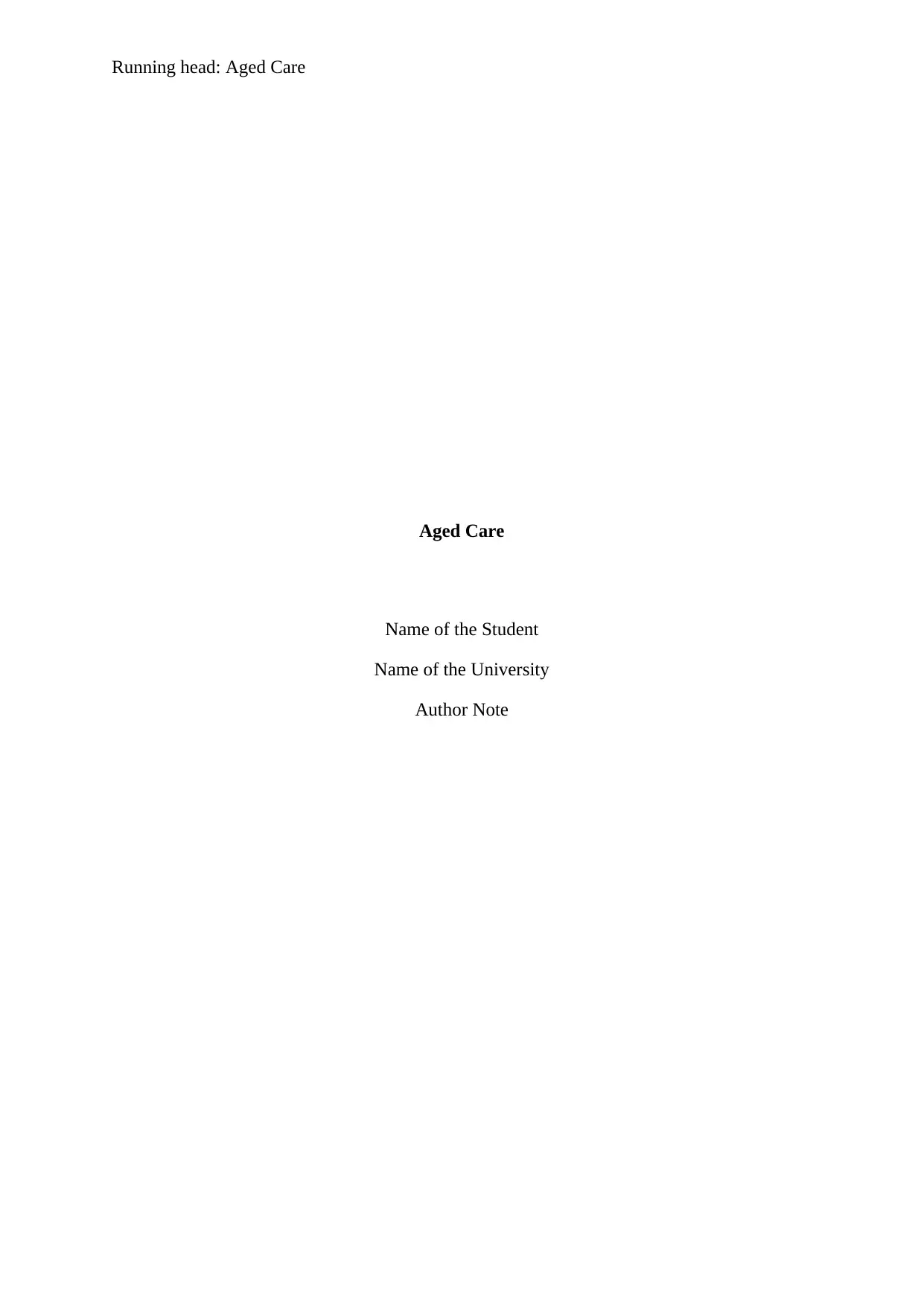
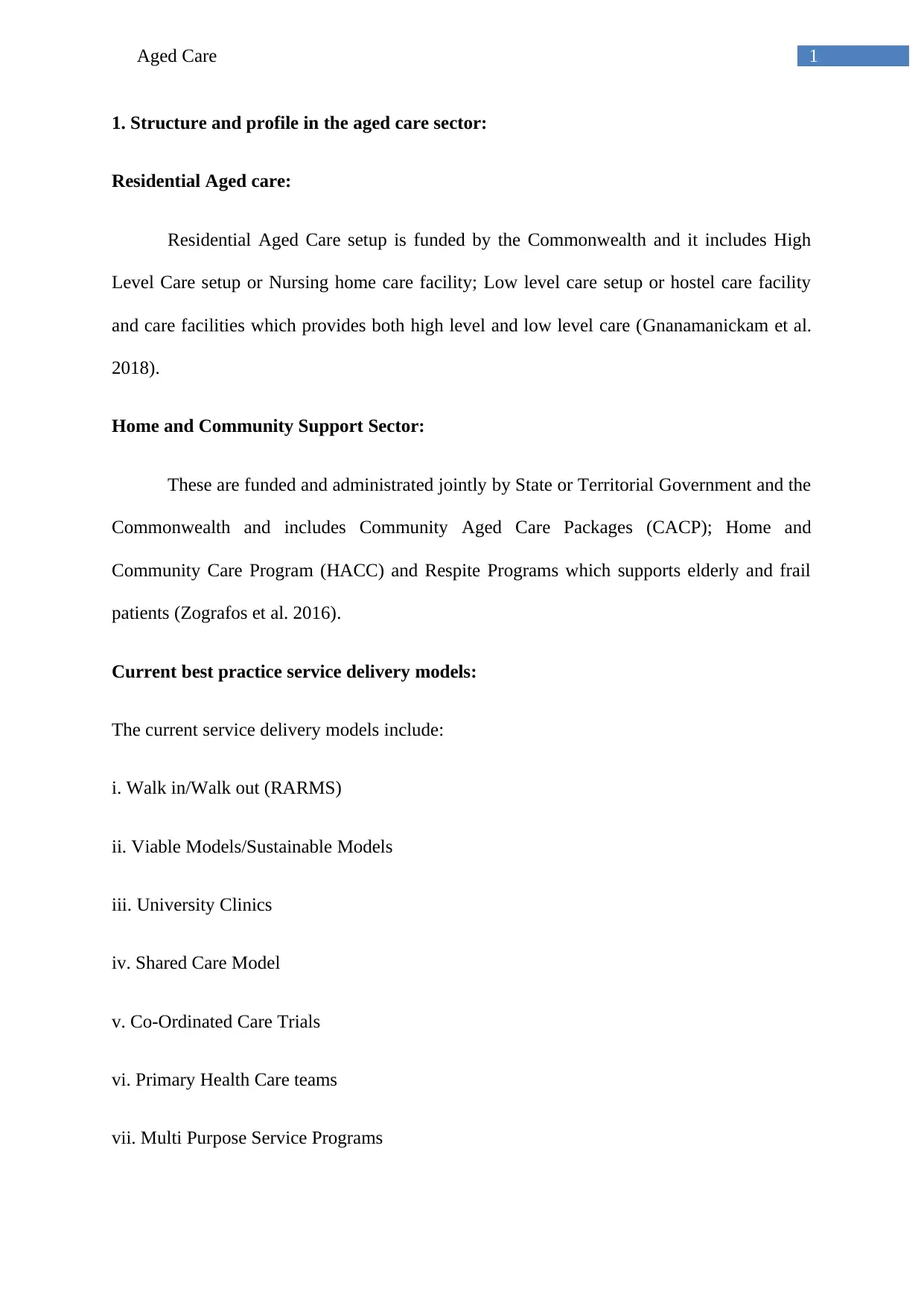
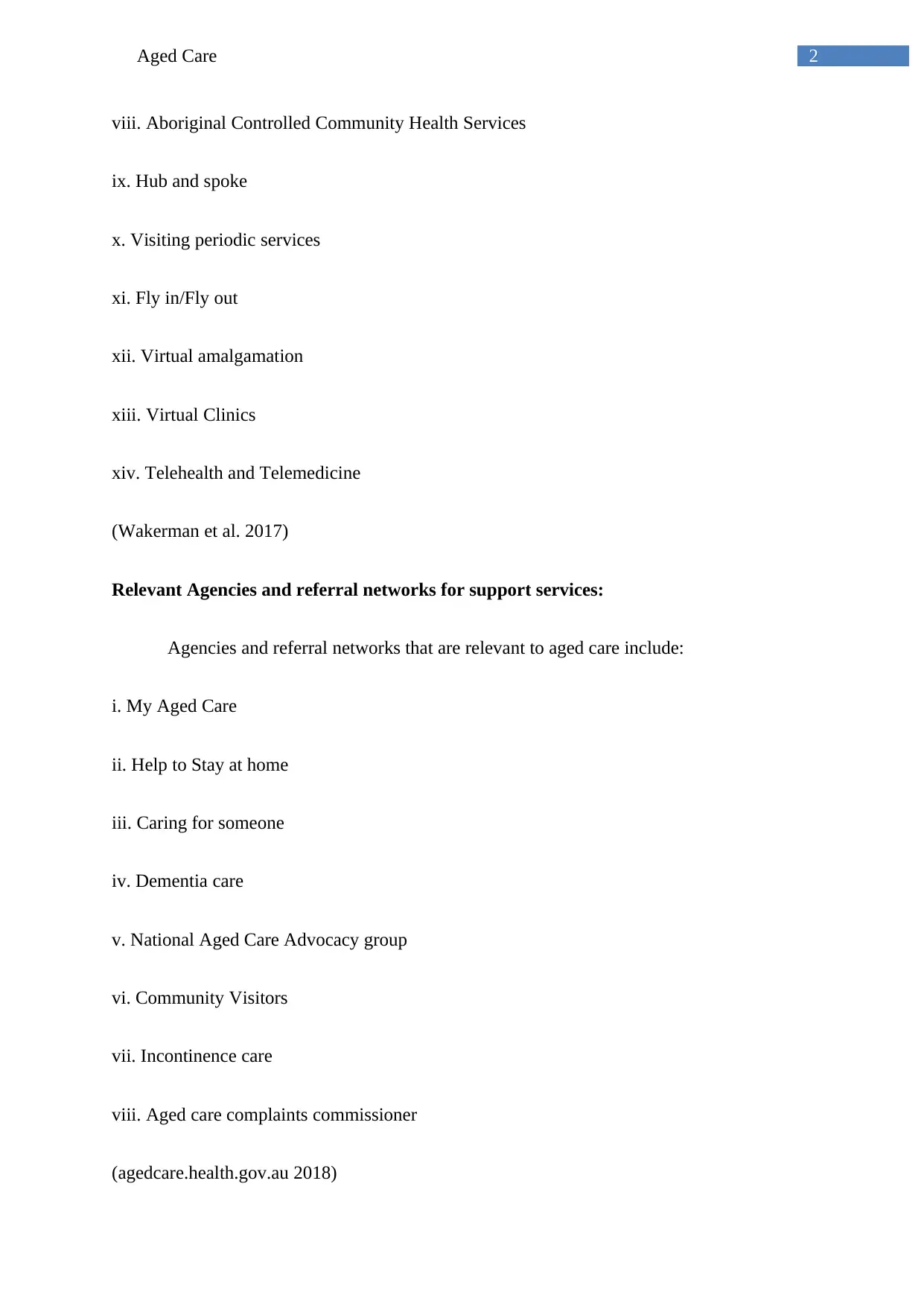
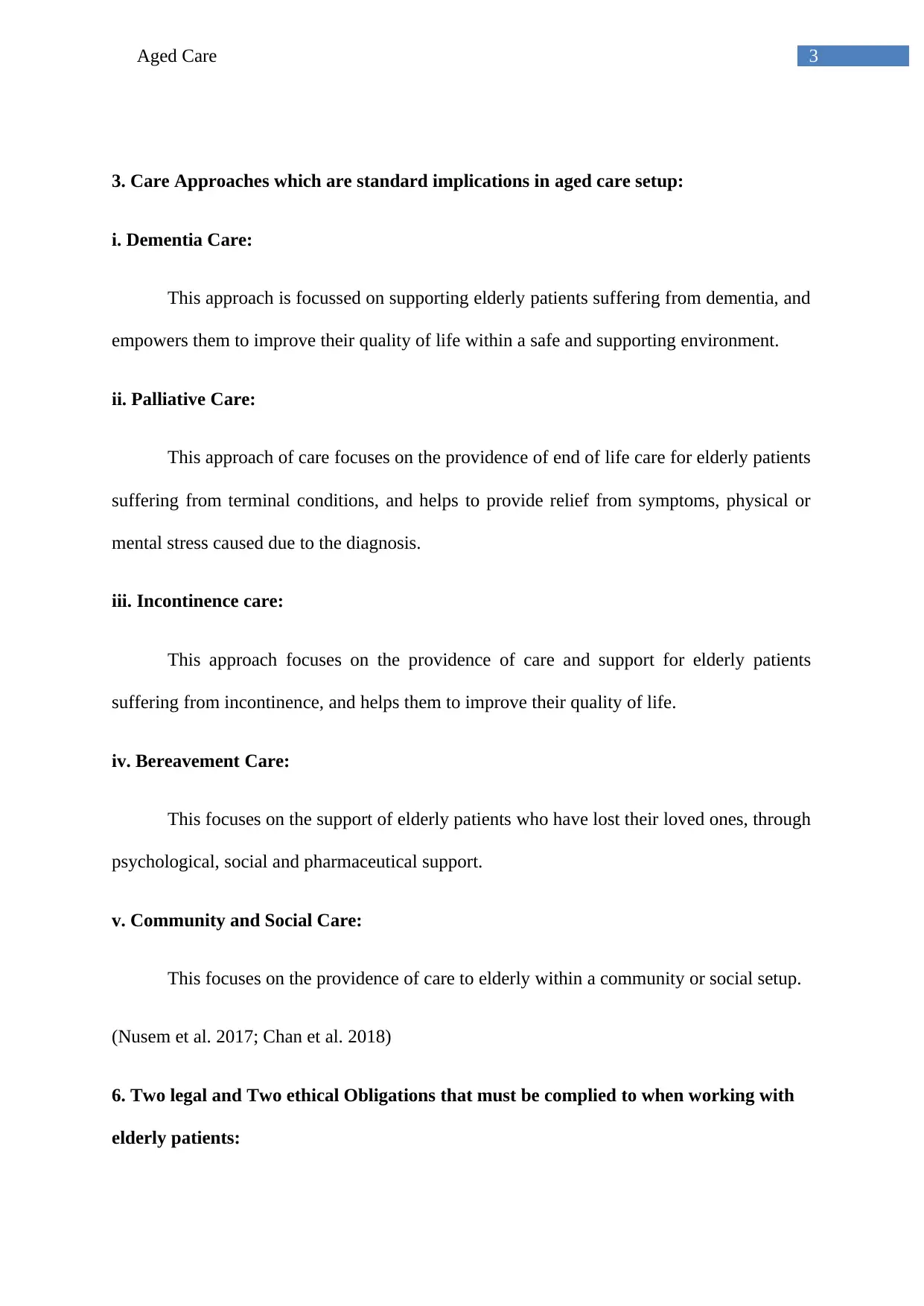
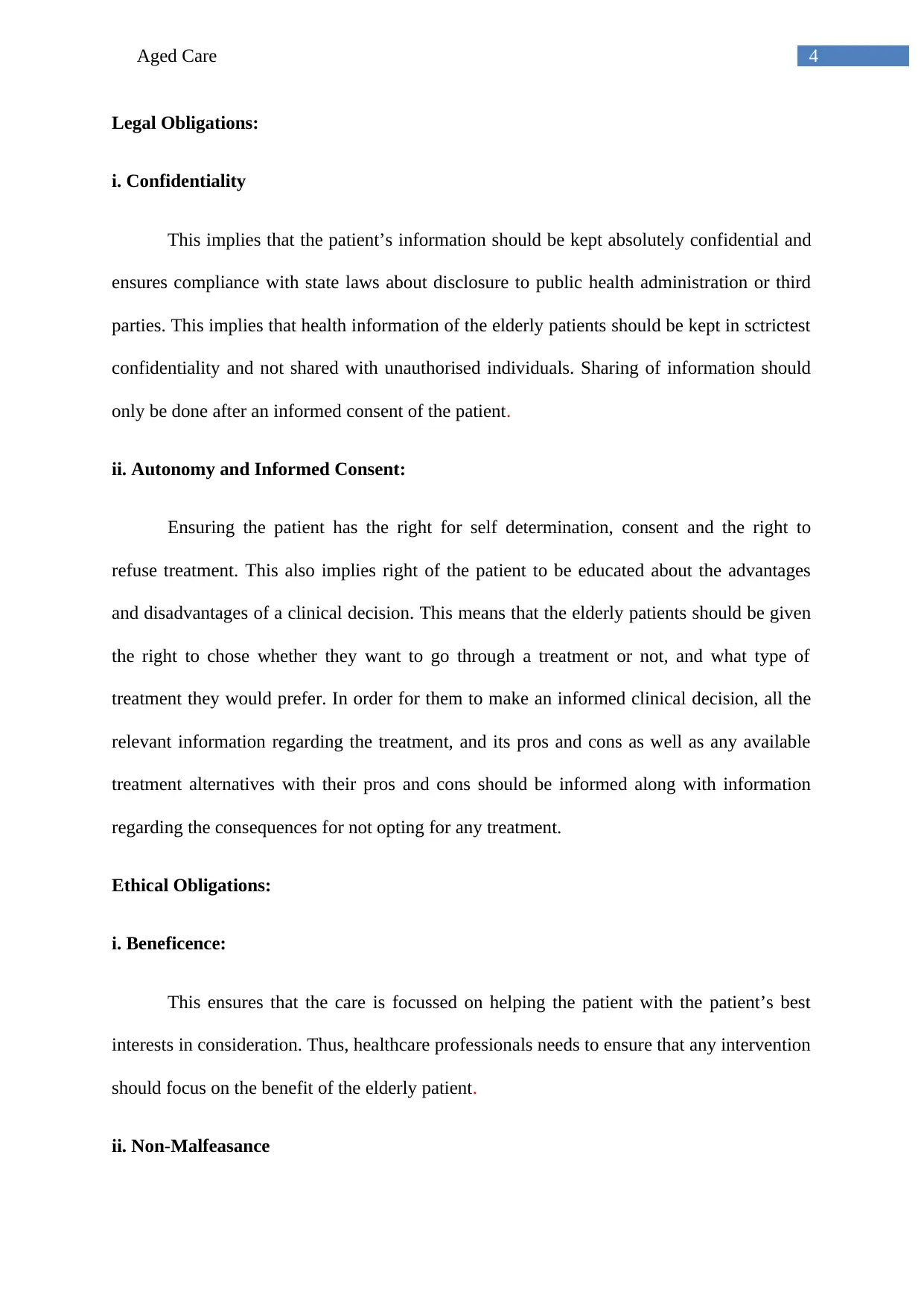
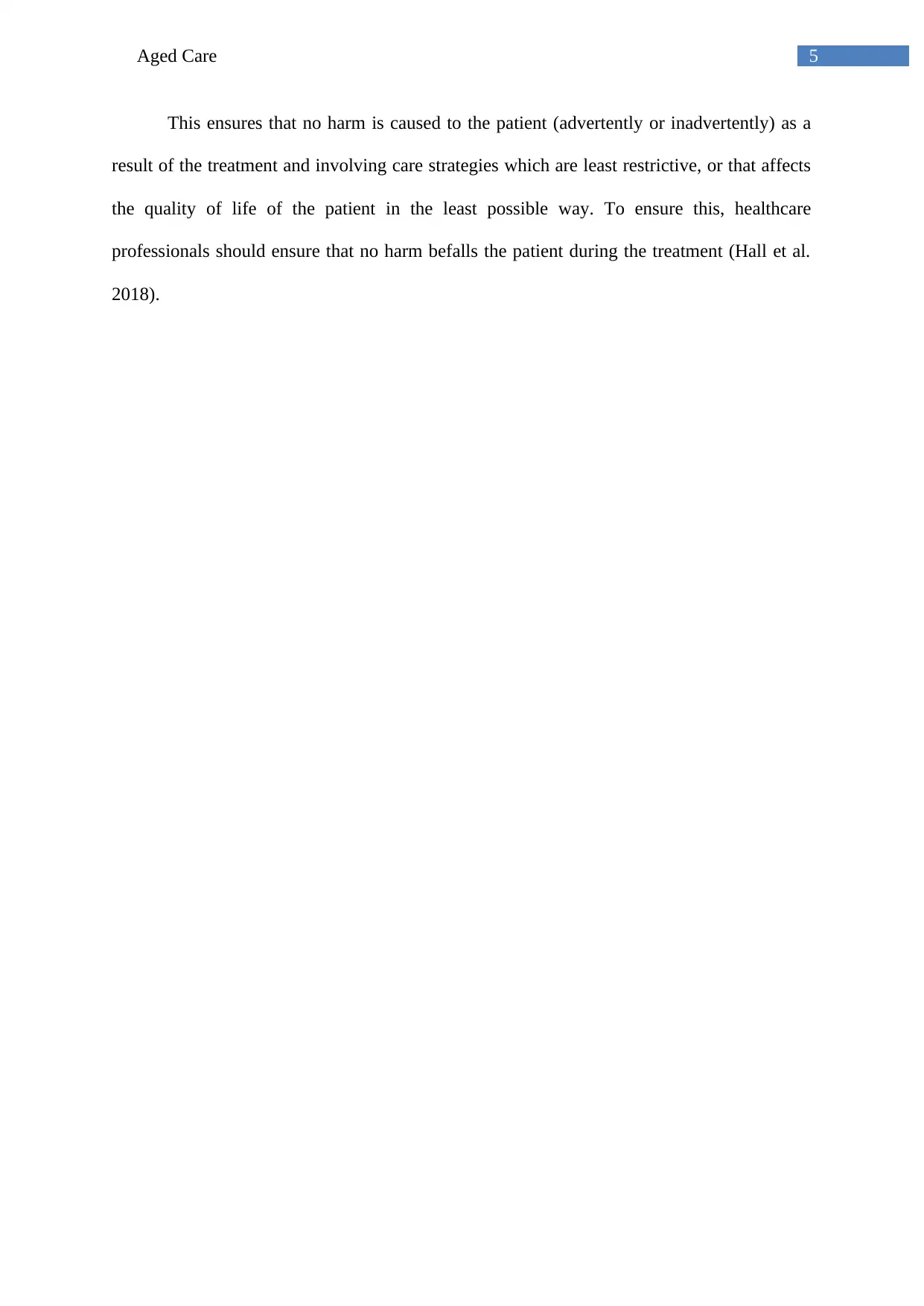
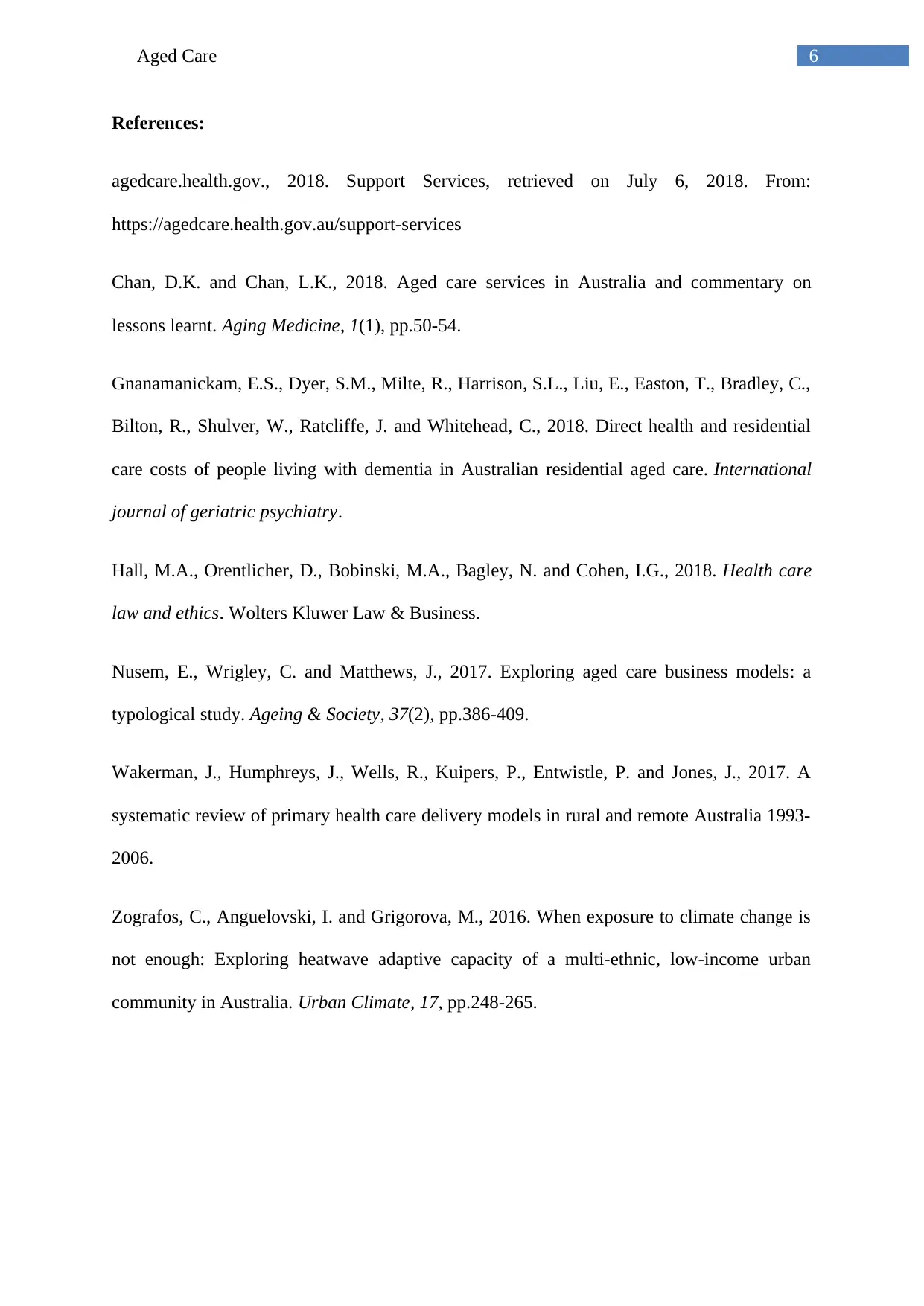






![[object Object]](/_next/static/media/star-bottom.7253800d.svg)